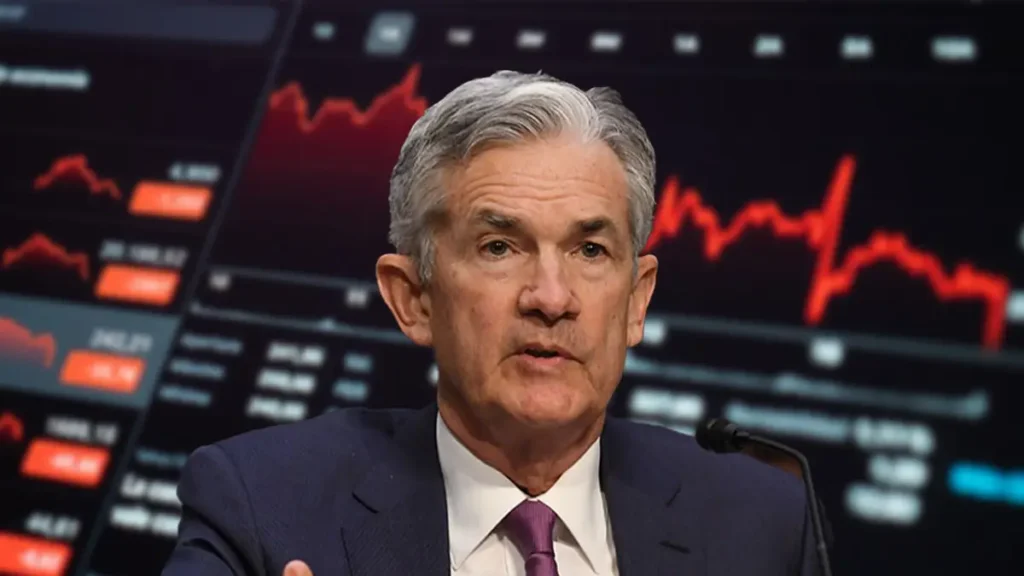New York Fed president John Williams and other experts support rate reduction in 2024, stressing the importance of monitoring the real rates or adjusted-for-inflation interest rates for economic stability. During this summer reporters and markets were thinking about how many times the Federal Reserve might increase interest rates this year. Meanwhile, New York Fed President John Williams talked about another idea.
He said the central bank might begin reducing real rates in 2024. One idea from the Fed official is to look at real rates or adjusted-for-inflation rates.
In a conversation, Williams clarified that if inflation decreases, and the Federal Reserve doesn’t decrease interest rates, then real rates that account for inflation will continue to rise without stopping.
Other Federal Reserve officials, like Minneapolis Fed President Neel Kashkari, have shared similar perspectives, considering it basic arithmetic. As it turns out, the market paid attention.
Following last week’s modest October consumer price inflation update, markets swiftly developed the expectation that rapid rate cuts would be implemented.
Traders in derivative markets currently anticipate a significant likelihood of the Federal Reserve’s benchmark rate.
The rate is presently ranging from 5.25% to 5.5%, dropping by a full percentage point by the end of the next year. They predict the initial reduction could happen as early as May.
Following a near approach to 5% in mid-October, the 10-year Treasury yield has declined to 4.44%.
Advocates of a more cautious approach, such as Jeremy Siegel from the Wharton School, are taking a bolder stance.
Siegel stated last week that he believes the Federal Reserve’s struggle against elevated inflation is nearly concluded and foresaw the possibility of interest rate cuts starting as early as March.
The market has disregarded the usual remarks from numerous Federal Reserve officials this autumn. Everyone is emphasizing that the Fed would have to maintain its benchmark rates at elevated levels for an extended period to bring down inflation.
Read More at: https://finfoldtimes.com/business/finance/
Richard Moody on real rates
When asked if the recent shifts in the market were influenced by the discussion on real rates, Richard Moody, Chief Economist at Regional Financial, responded, “Either explicitly or implicitly.”
“The markets comprehend that a slowdown in inflation provides the Federal Reserve with the flexibility to reduce the fund rates,” remarked Moody.
According to his estimate, the federal funds’ benchmark rate, when adjusted for inflation, currently stands at over 2%, surpassing pre-2008 financial crisis levels.
Moody suggested an alternative perspective, explaining that the upper limit of the Fed’s benchmark rate is 5.5%.
In comparison, the Fed’s projection for a “neutral rate” is 2.5%. This neutral rate is the Fed’s estimate of where rates should be if the economy is advancing at a 2% trend, and inflation is at a 2% rate.
However, some experts are expressing scepticism about the Federal Reserve’s assessment of real rates.
Adam Posen questions the concept of ‘Normal’ Interest Rates
Adam Posen, President of the Peterson Institute for International Economics, outlined two concerns with the argument about the real funds rate.
First, he noted that some of the negative impact from higher rates is already factored into the market and is anticipated.
Secondly, Posen pointed out that the Fed’s benchmark rate “is not a sufficient statistic for monetary conditions.” He clarified that the fed funds rate represents interbank lending rates.
According to Posen, concerning the economy’s impact, the crucial factors are the broader monetary and credit conditions. He emphasized that it’s unclear whether the real fed funds rate adequately reflects these comprehensive changes.
In a subsequent interview, Posen emphasized, “The last two decades have repeatedly taught us that what matters is credit conditions and liquidity in specific markets.”
He noted that even financial-condition indices fail to fully capture these dynamics. Posen concluded that people might be overestimating the potential additional drag on the US economy if the real federal funds rate increases due to inflation.
Posen also dismissed the notion of a natural or normal level of interest rates, stating, “Whether they’re too tight or too loose depends on the conditions of the economy.” Despite this, Posen expressed his preference for the Fed to increase rates once more.
He said,
“I think since they’re going to want to sit on the sidelines throughout this election cycle and with the productivity numbers not yet definitive, I’d do one more hike before February.”
Posen was referring to robust productivity gains in the past two quarters, which many economists believe will enable the economy to expand without exacerbating inflation.
Passive tightening’s limited impact
Steven Richhiuto, Chief Economist at Mizuho Americas, argued that passive tightening doesn’t effectively influence people’s perceptions.
He emphasized that individuals tend to focus on nominal figures and don’t typically consider the economy through an inflation-adjusted lens.
Richhiuto stated, “I think the Fed is on hold for now,” but he refrained from asserting that the Fed has concluded its rate hikes.
Expressing a belief in “higher for longer,” he leaned toward a prolonged perspective on interest rates but stopped short of declaring that the upward trajectory is definitively finished.

